 EN
EN
 PT
PT
Models and materials to build for primary school
Product: Book
ISBN: 9788859017714
Publication date: 01/01/2019
Suitable for: Primary 1st level (ages 6-7), Primary 2nd level (ages 8-10)
REQUEST A SAMPLE OR MORE INFORMATION
A lapbook is a three-dimensional conceptual map to be constructed, which summarizes a topic in a creative and dynamic way. After the success of the My First Lapbook manual, many teachers were able to appreciate the usefulness of this tool for developing an effective study method and enhancing the metacognitive skills of the pupils. In the current school scenario, there is also the need to investigate the possibilities offered by lapbooks for teaching competences. With that in mind, this volume, after the introductory theoretical part, proposes five Learning Units, one for each primary school class, accompanied by a lapbook: each Unit proposes an interdisciplinary course starting from a fable and describes the activities to be carried out for each discipline, with the skills and cognitive processes involved. It also provides clear instructions and materials ready to be photocopied and distributed to children to create the lapbook with which they can summarize the contents learned. The Learning Units are developed starting from the following fables:
The book also offers the teachers the design sheets to independently create other Learning Units accompanied by lapbooks based on the interests of the class and / or the disciplines taught.
Introduction
The lapbook: what is it and why use it
Overview of the skills curriculum and Learning Units
How to plan a Learning Unit with lapbook
Planning worksheets
MATERIALS: LEARNING UNITS WITH STRUCTURED LAPBOOKS
First grade: The cicada and the ant
Second grade: The dog and his reflection
Third grade: The stork and the fox
Fourth grade: The tortoise and the hare
Fifth grade: The city mouse and the country mouse.
Bibliography

Models and materials to build for primary school
“Teaching Competences with Lapbooks” proposes an original interdisciplinary didactic program aimed at primary school children making use of lapbooks as a tool, or rather three-dimensional concept maps to build, that summarize a topic in a creative and dynamic way. In the wake of this quote by the teacher and pedagogist Alberto Manzi, Paper, Scissors and Apps is a notebook that assists children in kindergarten with discovering the wonders of the world, thanks to the help of technology. Find out more!
Teaching Competences with Lapbooks is part of the series dedicated to teaching with lapbooks, which have already sold more than 40.000 copies.
WHAT IS A LAPBOOK?
A lapbook is a dynamic, creative collection of contents. It is made out of folders of various sizes, according to intended use and necessity. It contains minibooks or templates which hold essential and specific information regarding a chosen topic. The ultimate goal is to create a three-dimensional, interactive map of what you have studied and learnt, through a practical and personalised project.
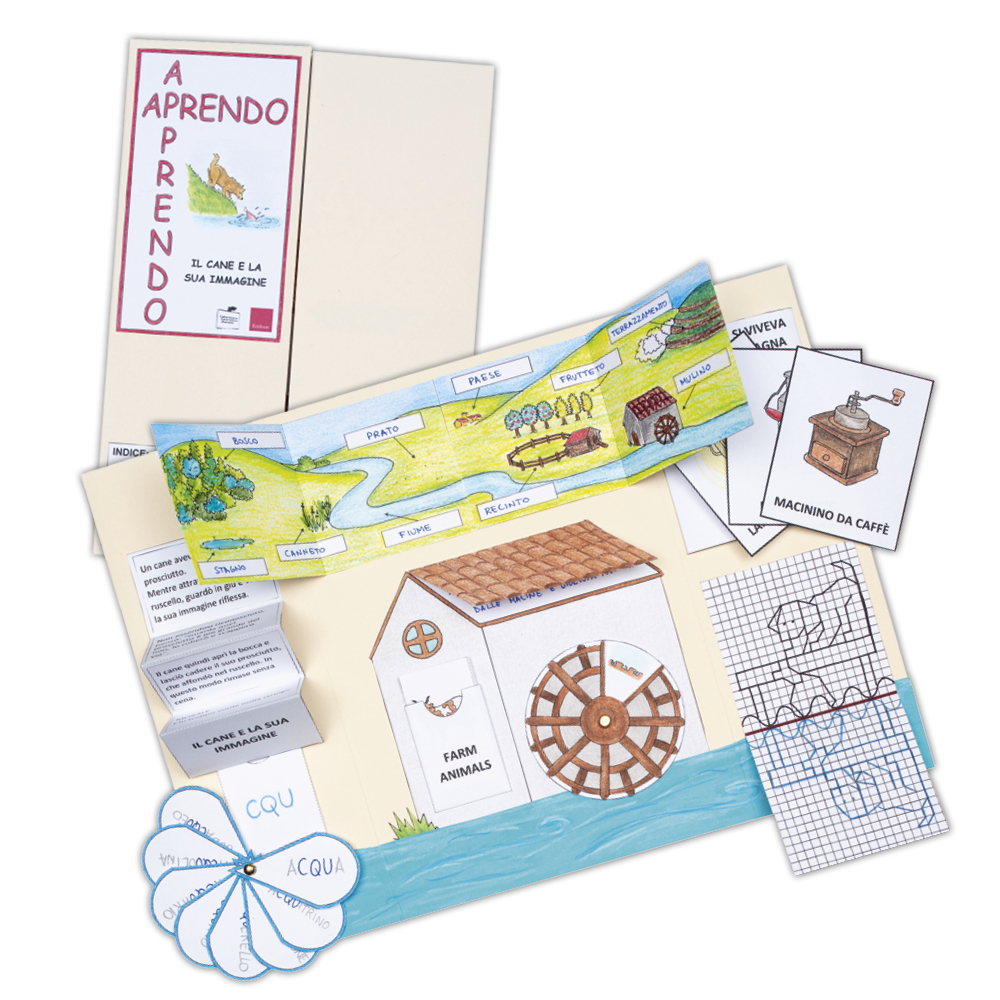
THE COMPETENCES LAPBOOK
According to the authors, Giuditta and Ginevra G. Gottardi, learning passes mainly through the senses and emotions. The lapbook, in particular, falls within the sphere of learning by doing and proposes activities which are strongly focused on the student's personal experiences, following the experiential learning cycle: problem →experience →communication →analysis →generalization →application The lapbook can be used as a conceptual map both to summarize the contents learned in a single lesson and to summarize the entire work done on a topic. It is therefore possible to think that if we design a Learning Unit based on skills, this project can be summarized in a lapbook.
LAPBOOKS FOR PLANNING A LEARNING UNIT
“Teaching competences with lapbooks” proposes five Learning Units, one for each grade of primary school. Through the use of a lapbook, each unit presents an interdisciplinary learning path that involves multiple school subjects using a fable as a starting point.
Aesop’s famous fables are the common thread, chosen according to the topics covered in the national curriculum:
1st Grade: The Cicada and the Ant 2nd Grade: The Dog and his Reflection 3rd Grade: The Stork and the Fox 4th Grade: The Tortoise and the Hare 5th Grade: The Country Mouse and the City Mouse
The text provides clear instructions and materials ready to be photocopied and distributed to the children to create a lapbook in which the contents learned can be summarized.
HOW TO MAKE A COMPETENCES LAPBOOK
Let's learn more about the process of building a lapbook, taking the one proposed for first grade as an example, starting from the fable “The cicada and the ant”. Here is how the lapbook looks at the end: closed (left) and open (right)
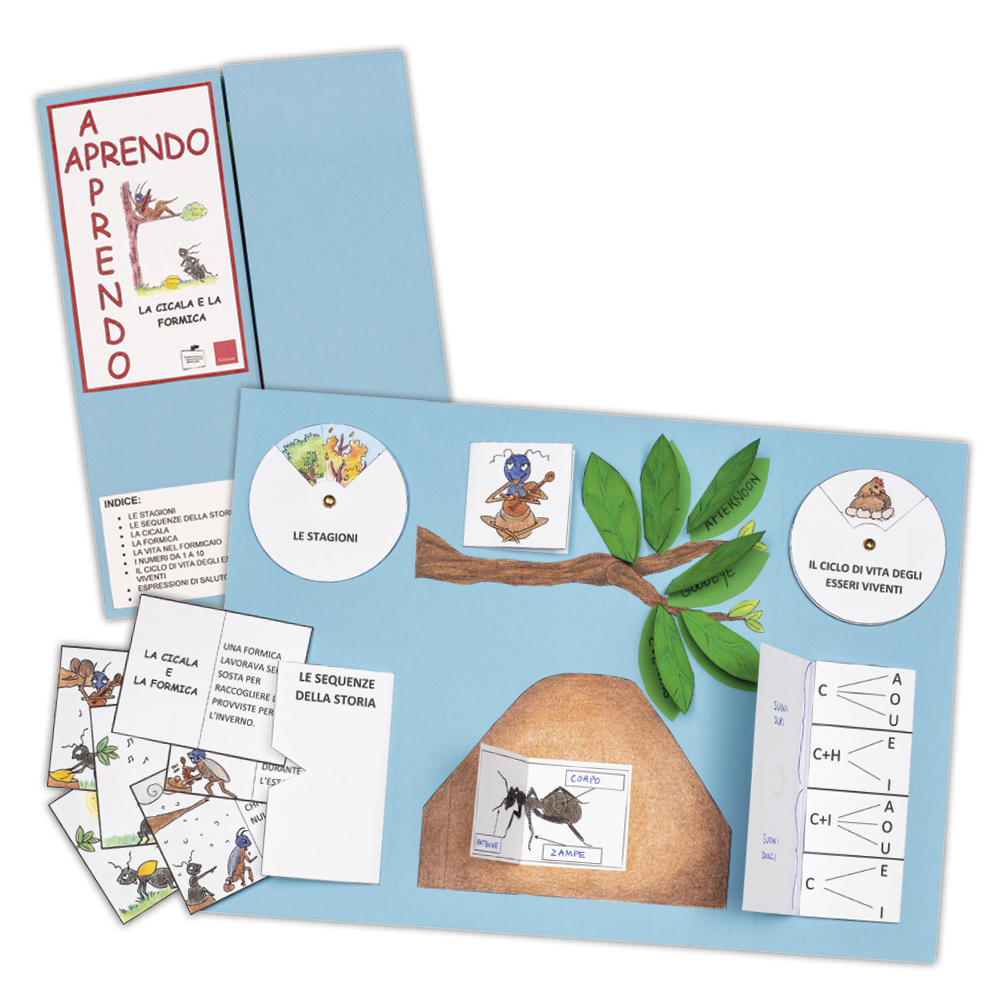
Elements for constructing the lapbook “The cicada and the ant”
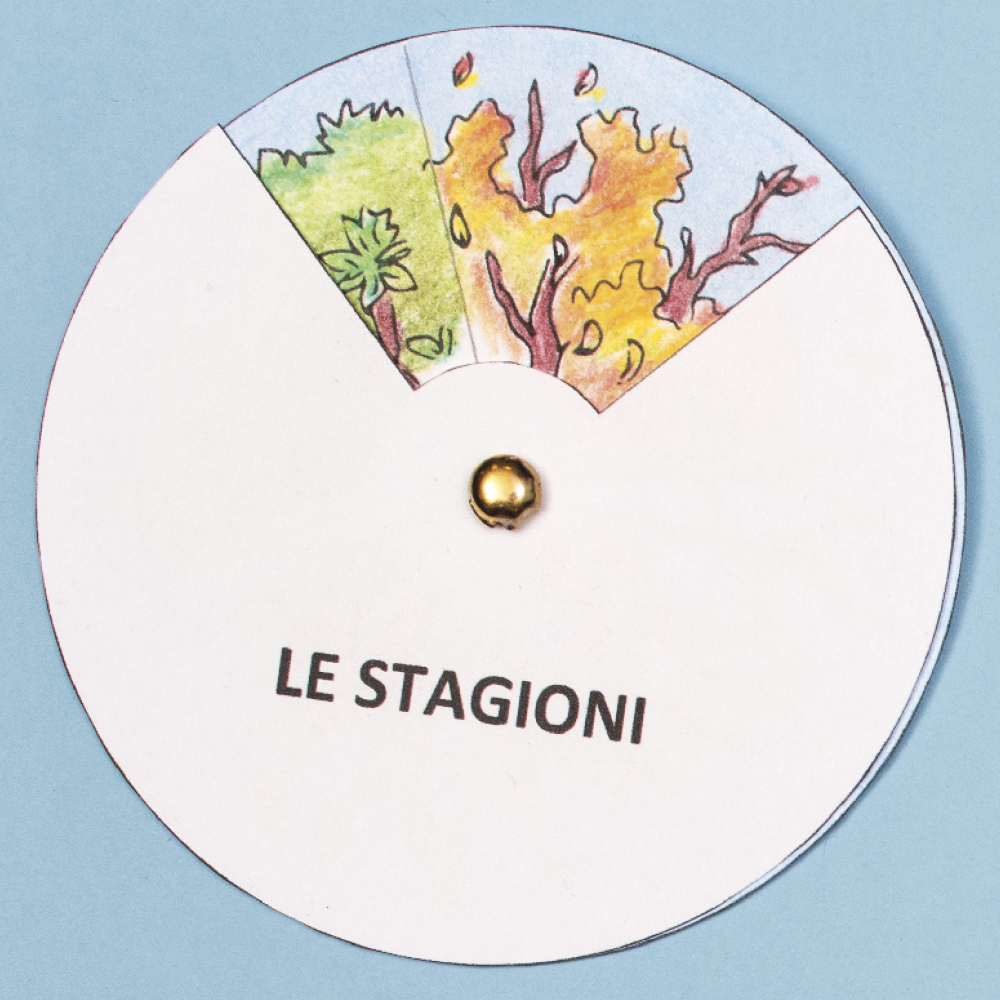
Season wheel. Subject material: history
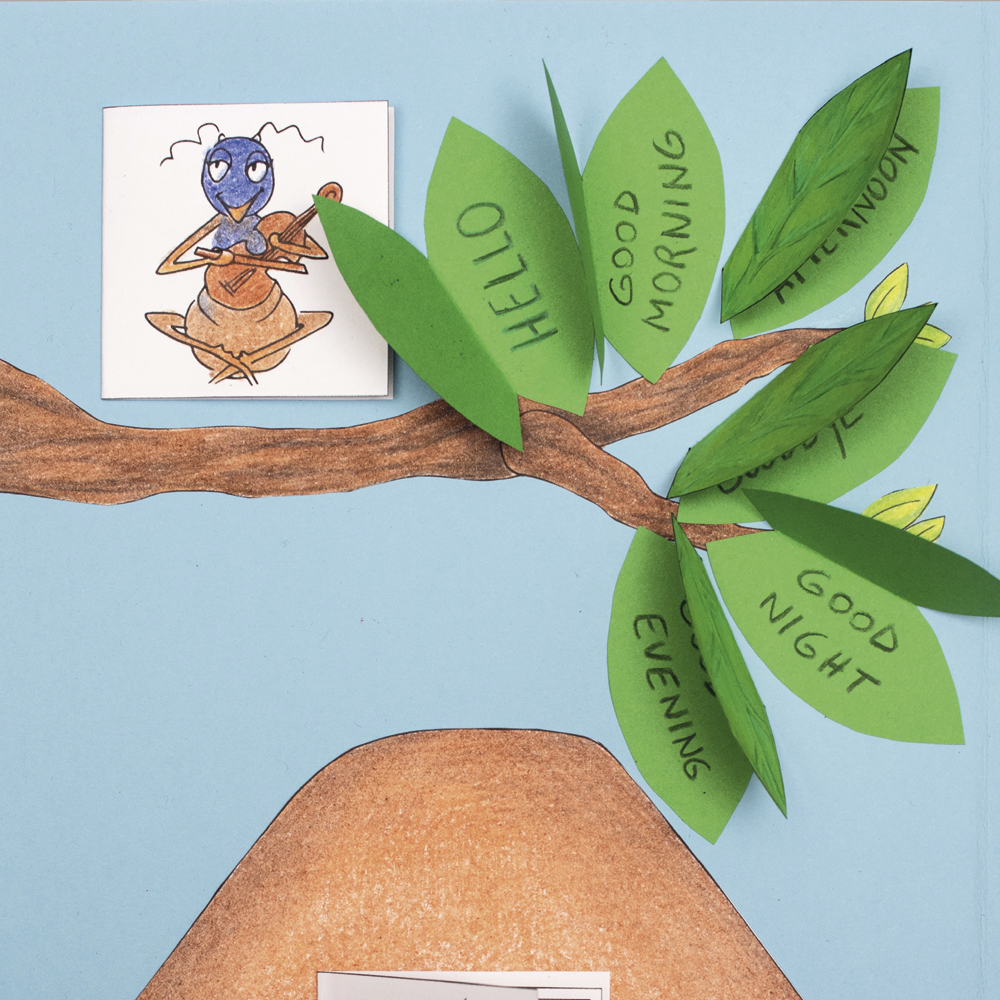
Branch with a cicada and greetings in English. Subject material: English
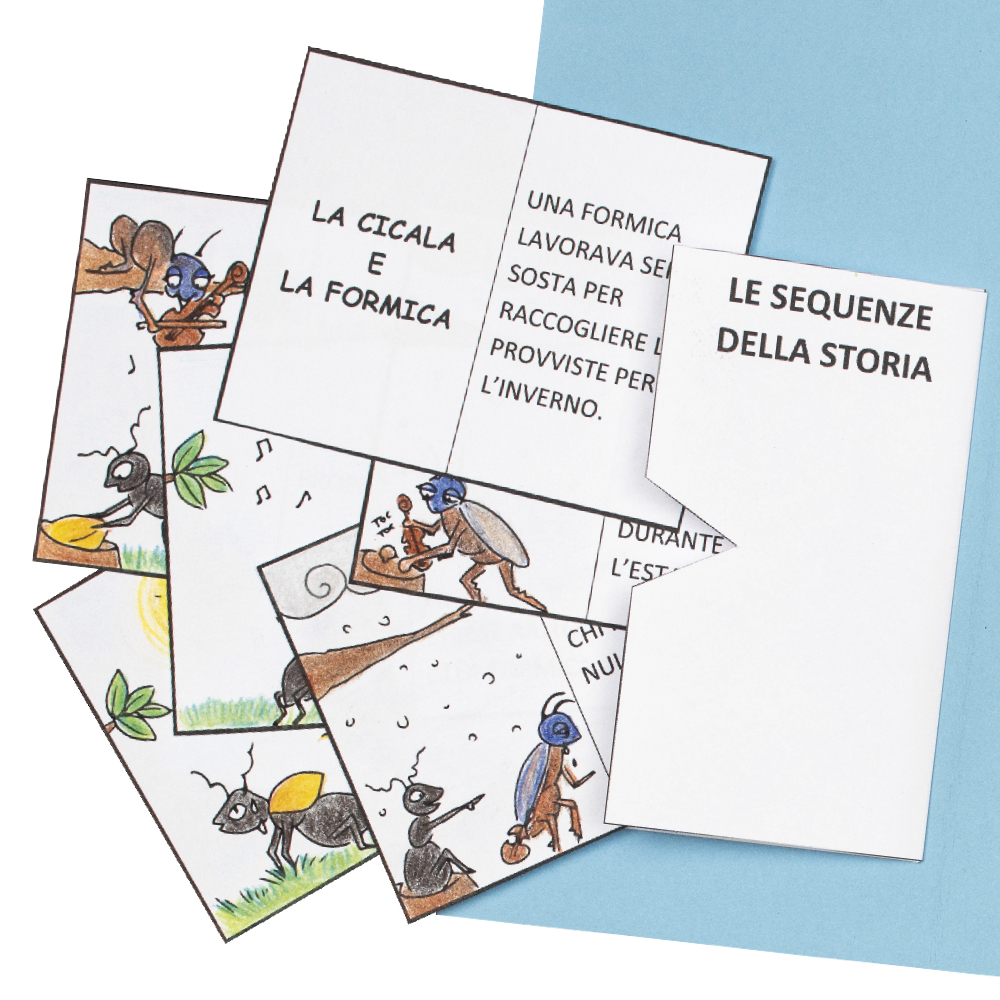
Envelope with the sequence of the story. Subject material: Italian
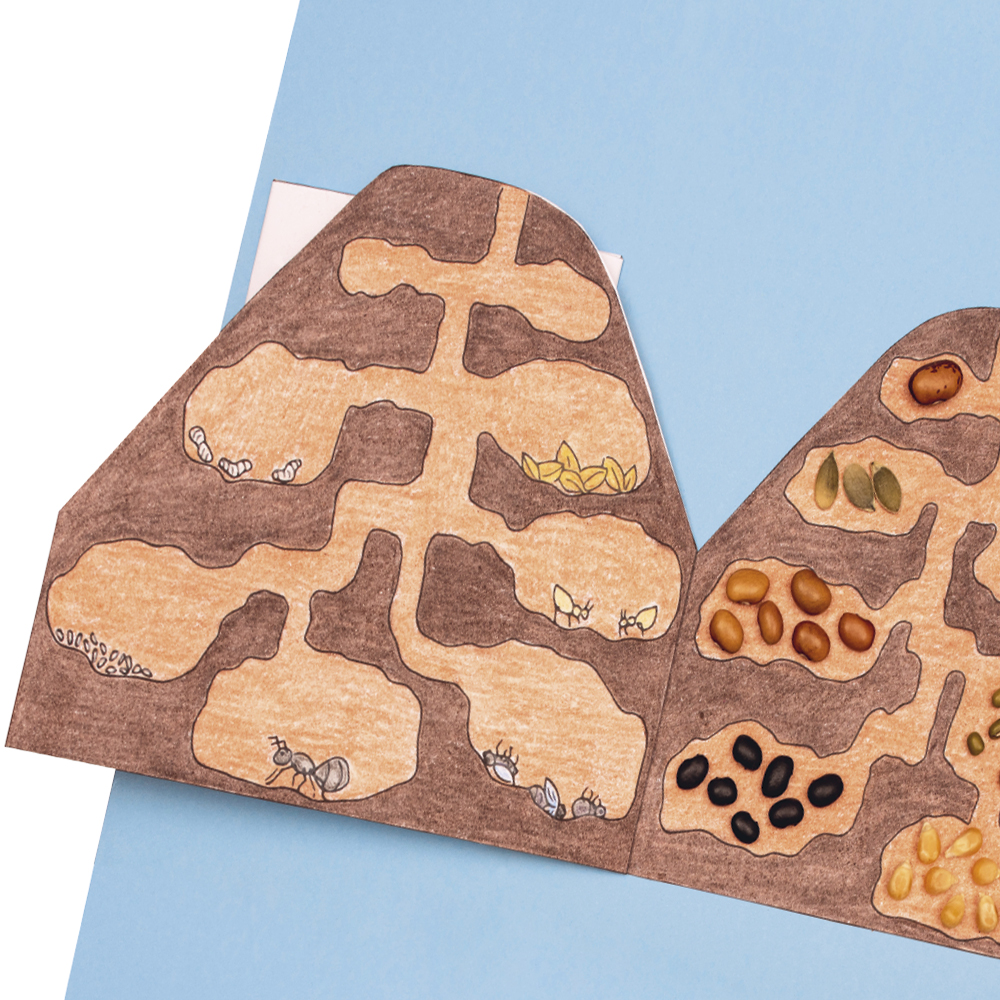
The anthill with 10 cells. Subject material: Mathematics
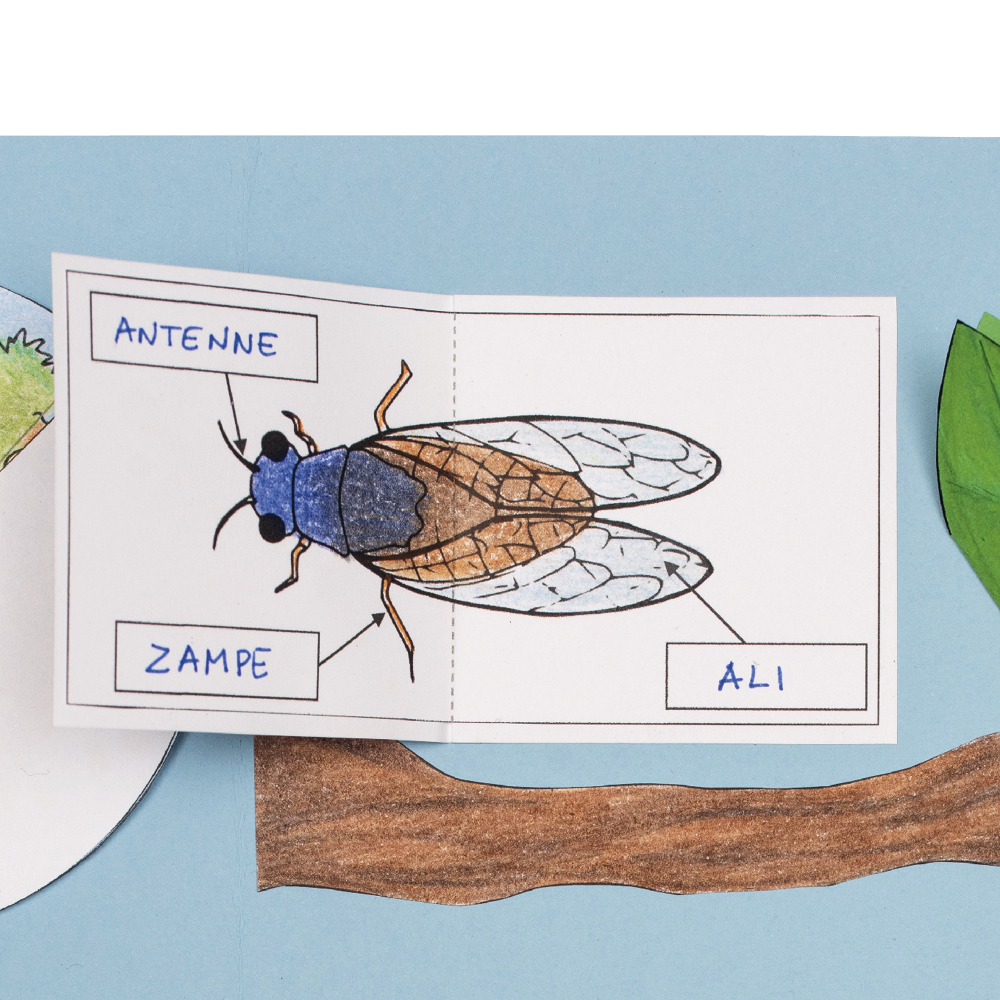
Scientific diagram of a cicada. Subject material: Science
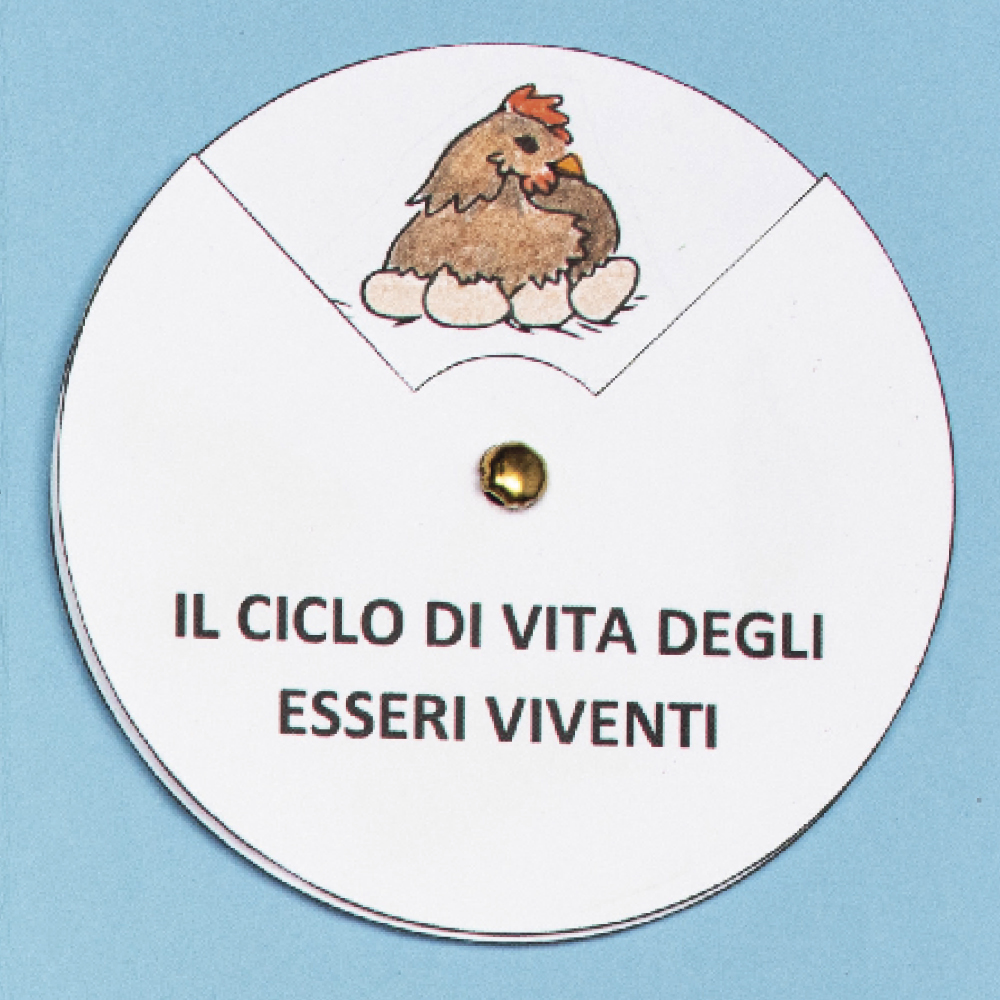
Wheel with the life cycle of living beings. Subject material: Science
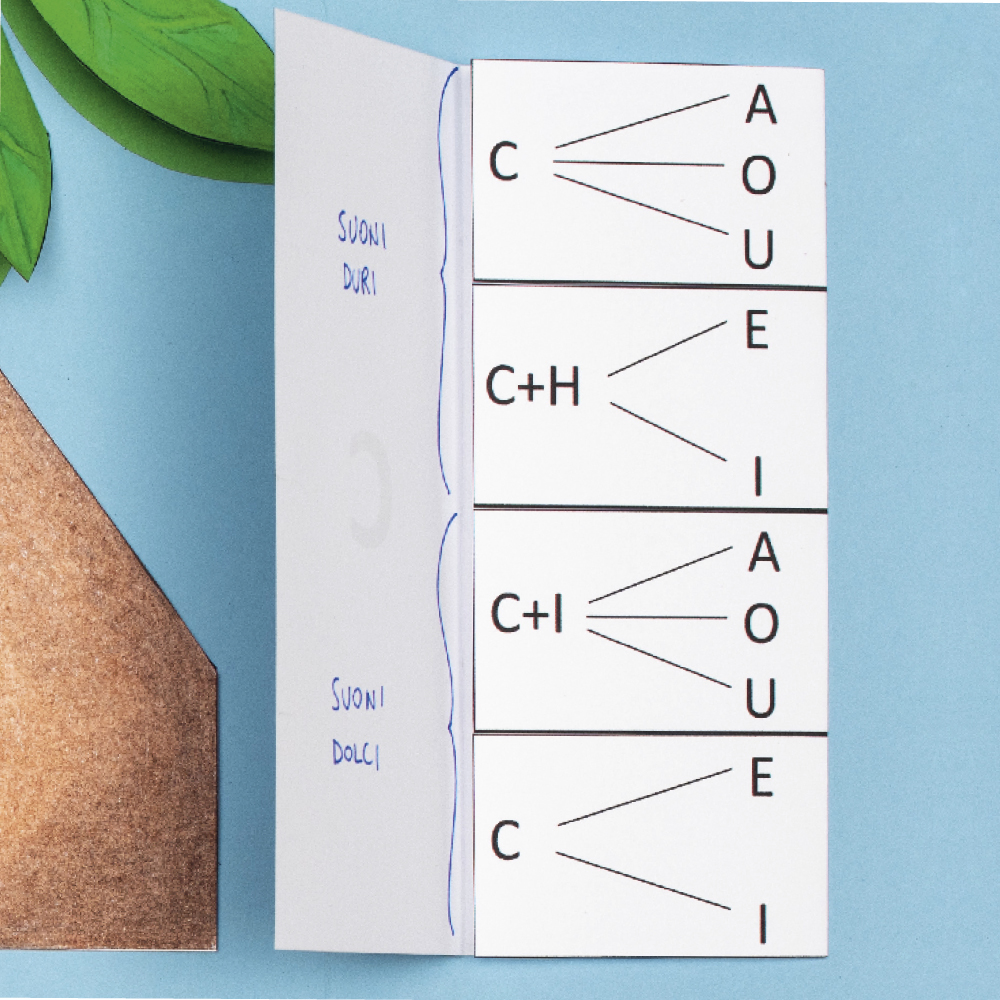
Flap book with exercises on recognizing the letter C (soft and hard sounds). Subject material: Italian
WHO IS IT FOR
A lapbook is a teaching tool available to teachers who decide to build interdisciplinary educational paths, allowing students to find connections between the various subjects and acquire transversal skills. The lapbook can be built individually or in a group. Thanks to its inclusive nature, each student can bring his or her contribution and has the opportunity to share his/her work with classmates.
THE AUTHORS
Giuditta Gottardi and Ginevra G. Gottardi are co-founders of the Training Center for Interactive Manual Workshops, which offers a meeting point for teachers interested in active teaching.